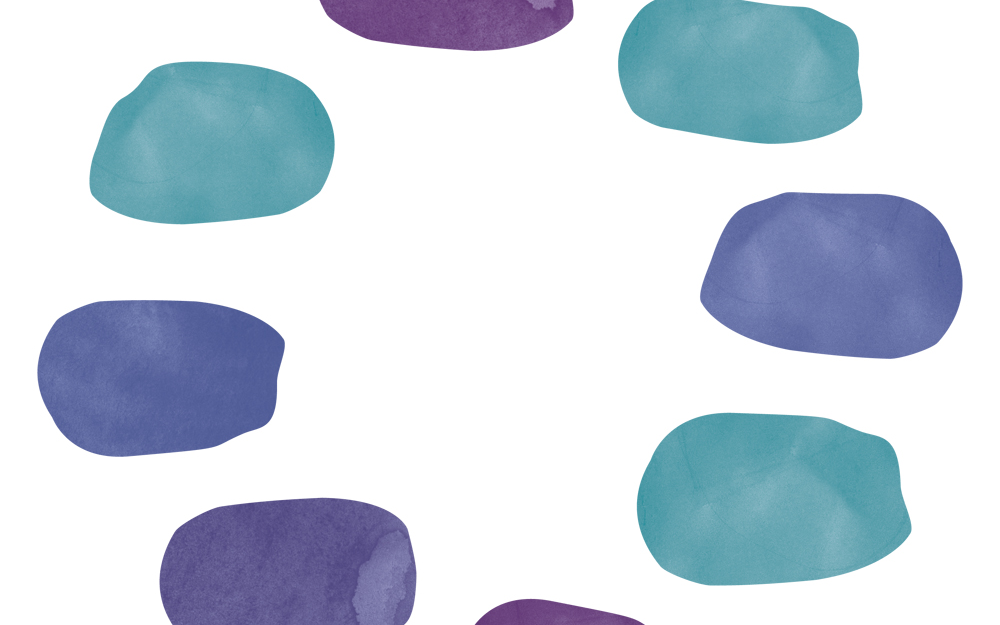The Eight Ujarait (Rocks) Model: Supporting Inuit Adolescent Mental Health

By Gwen Healey, Executive and Scientific Director, Qaujigiartiit Health Research Centre, Assistant Professor, Northern Ontario School of Medicine and Ceporah Mearns, Research Associate, Qaujigiartiit Health Research Centre
A strengths-based approach based on Inuit knowledge and ways of knowing promotes wellness and positive protective and resilience factors among Inuit youth. The challenges facing Inuit youth in Nunavut are well-documented, as are the rates of attempted suicide and death by suicide in our young population. Through a community-led process, which included literature review and collaborative community engagement, a series of protective factors were identified and expanded upon in a model for promoting positive mental health and wellness among Inuit youth, which are described in this article.
In the 1950s and 60s, Inuit in Nunavut experienced a series of events which had a significant and detrimental impact on families, including a formal relocation and resettlement program, residential schools, and medical evacuations for tuberculosis. These events, occurring at roughly the same time, separated children from their parents, and siblings and spouses from each other. The events had a very profound impact on the mental health of our families and communities. Today, mental health and wellness is one of the most pressing issues identified by community members and organizations in Nunavut. In the 2007-08 Inuit Health Survey, 48% of respondents reported having thought seriously about suicide at some point in their life, and 14% of respondents reported recent suicidal ideation. Rates of attempted suicide in Nunavut are extremely high. Among Nunavut adults, younger adults reported more recent suicide attempts than older people, and reports of suicidal thoughts and suicide attempts were more common among women than men. The determinants of suicide are embedded in a multitude of societal factors, such as poverty, housing and education, as well as individual factors, such as childhood physical or sexual abuse, exposure to violence, and intergenerational trauma related to the previously mentioned historical events.
In spite of the challenges, there are strengths and capacities in our communities and in our way of life which support protective and resilience factors. We know the pathways to wellness which existed before settlement, and we need to revitalize that to support the youngest members of our communities to live happy, productive lives. We need to reclaim them and build on them to ensure the next generation is not confronted with suicide in the same way we have been. Pathways to wellness include our relationships with each other; kinship and extended family bonds; relationships with the land; celebration of the arts and music; the power and meaning of story in our lives; rich Inuit knowledge and philosophical perspectives shared by our elders; and learning and skill-building pathways which celebrate the unique gifts and strengths of every child.
It is upon these pathways that the Qaujigiartiit Health Research Centre set out to develop a model for youth camps designed to respond to the needs of Nunavut youth during a critical stage of adolescent development. It was grounded in research, best practice, and Inuit terminology and philosophy. Ujaraq is the Inuktitut word for rock. The Eight Ujarait (Rocks) Model highlights eight core constructs which symbolize the formation of a solid stone foundation of skills and knowledge upon which young people build their lives. The eight Ujarait are visualized in the form of a ring, which is a common formation to come across on the land in the Arctic, where the stones have been used to hold down the base of a tent.
The evidence-based modules or Ujarait include the following:
- Strengthening Coping Skills
- Inuuqatigiitiarniq (being respectful of others): Building Healthy and Harmonious Relationships
- Timiga (my body): Nurturing Awareness of the Body, Movement and Nutrition
- Sananiq: Crafting and Exploring Creativity
- Nunalivut (our community): Fostering Personal and Community Wellness
- Saqqatujuq (distant horizon): Self Discovery and Future Planning
- Understanding Informed Choices and Peer Pressure
- Avatittinik Kamatsiarniq (Stewards of the Land): Connecting Knowledge and Skills on the Land
The Ujarait highlight the promotion of positive social interactions and relationships to others, opportunities for self-reflection, and cultural skill-building, and explores the relationship between healthy minds and bodies. They are delivered in a positive, respectful, strengths-based and solution-oriented space. The model also emulates the concept of Pilimmaksarniq, which is the development of skills through effort and practice – a critical concept in understanding Inuit ways of knowing. The Nunalivut module directs youth toward the collective addressing of a community concern by contributing time and energy to an activity, such as visiting elders or baking and giving food to someone in need. The Timiga module focuses on the body, physical activity and nutrition, including the practice of Inuit games and traditional activities such as hunting and harvesting, which naturally involve body movement. The model fosters physical, mental, emotional and spiritual wellness and supports a holistic perspective of wellness among youth. Parents of youth participants have reported an improvement in behaviour and attitude, strong cultural pride, greater confidence in identity, and improved family and community relationships.
The Eight Ujarait model is one example of an evidence-based, community-driven intervention, which is based on the pathways to we know are essential for strengthening protective and resilience factors among youth.
We recognize the knowledge sharing, story-telling, guidance, expertise and collaboration of many community members and stakeholders who contributed to the development of this work and who will continue to be vital in its implementation. Qujannamiik! Thank you! Funding for this work was provided by the Public Health Agency of Canada.
